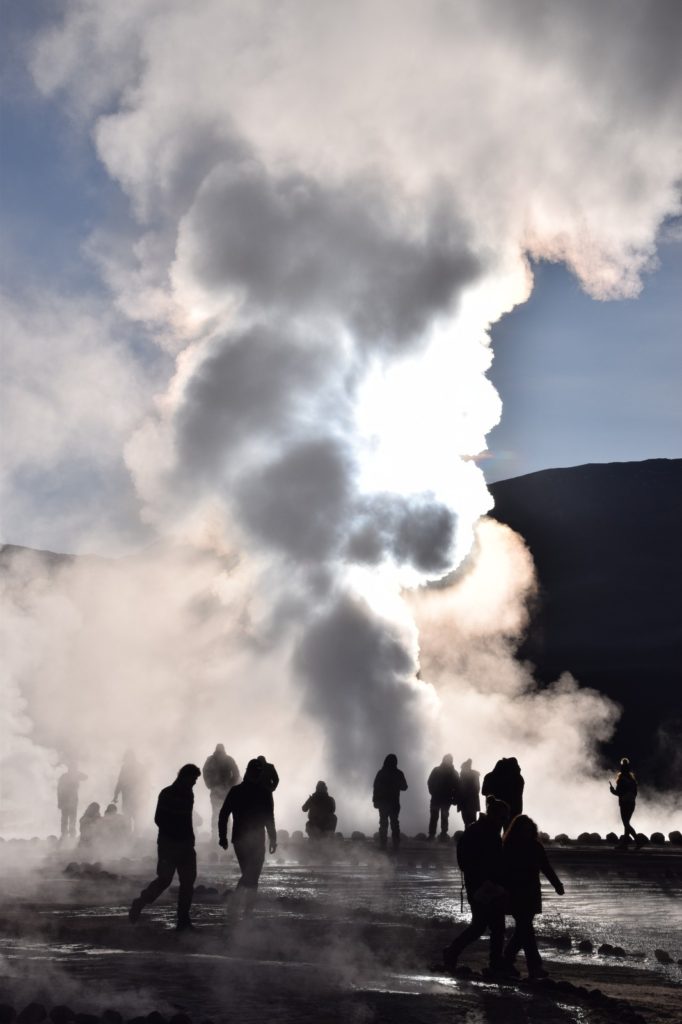Home » International Business and Educational Trip 2022
IBET Trip
For the Dispuut’s International Business and Education Trip of 2022, a group of 19 students in Water Management and Environmental Engineering and professors Thom Bogaard, Erik Mostert, and Kim Lompe traveled to Chile to learn about the water-related issues and gain new perspectives on global and local challenges. The group traveled from the center of the country to the north, exploring a broad range of landscapes. Highlights included snowball fights while stuck in traffic in the mountains above Santiago, exploring Valparaiso with Biochemistry students from a local univeristy, learning about water distribution and drought in a symposium and case day in La Serena, hiking and stargazing in the Atacama desert.
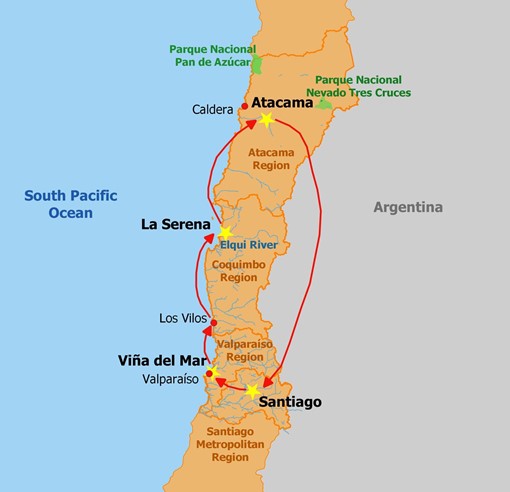
The story
From Rens Ampting and others
I am speaking for everybody that joined the trip, when I say that I would like to thank Linnaea, Ole, Gerardos, Valeria, and Sophie for this great experience. The IBET Committee of Dispuut Water & Environment did a stunning job and compliments are well deserved. With this message I would like to try and give a small impression of the study trip to Chile.
We left the Netherlands with a group of 22 people, including two professors Thom Bogaard and Erik Mostert on a Saturday afternoon. Surprisingly enough there was hardly any queue in front of security at Schiphol. So with good faith and some beers at the Heineken bar we took off to Chile with a transfer at Heathrow airport.
Our journey commenced in the capital of Chile, Santiago. This impressive city is enclosed by mountain ranges and home to about 8 million people. A hike up to a beautiful viewpoint across the city was definitely one of the most appealing glimpses of our trip. We had plenty of educational activities such as visiting El Yeso reservoir, the water museum and the Chilean Ambassador of the Netherlands. This was interspersed with a legendary night out in club Caracas, and an informative free city tour (of course we gave our great tour guide a tip). On our way to the next city we had a guided tour at winery Casa del Bosque, however everybody was waiting for the fancy wine tasting in the end. In short, we kicked off the study trip tremendously!
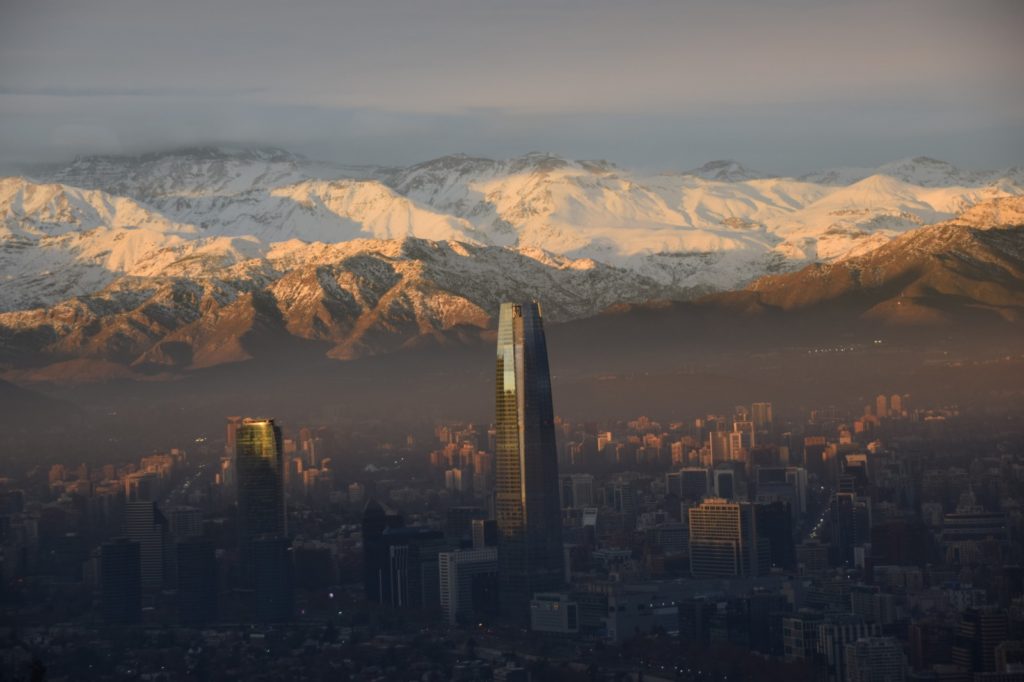



During our next stop in Valparaiso, we met students from the University of Valparaiso. They showed us around the city and guided us through their University with notable much laboratory space. The city is known for their old suburbs and graffiti art as well as the best city in Chile to go out, and so we did :). I really liked meeting students from other countries as we exchanged a lot of experiences and stories. It was very well organised and the activities with local students brought another dimension to our study trip.
Alessandro: “Valparaiso is a unique city. Sitting on a hilly bay, its very colourful houses are all bundled up and connected by the famous funiculares, very picturesque elevators that climb the steepest slopes of the terrain. Every corner is lively and animated, and the walls of many streets are covered with amazing murals that reveal the artistic soul of the city. All this features create a stunning and iconic image of this wonderful town.
In this place our experience was short but intense. We experienced the most we could in the short time given: a breath-taking sunset, empanadas from a local bakery, a night out in Vina del Mar, and a tour of the city and university thanks to our colleagues from PUCV.
These amazing people helped us to fully understand the culture and vibes of such a city in the sweetest way, taking care of us and answering all kind of questions we had. I found it extremely interesting to meet people that are following a path similar to mine, but on the other side of the world and in a completely different setting. We were all amazed to share our experiences and discovering the differences in our worlds, but also finding out that, in the end, we all have very much in common. “
After we said our new Chilean friends goodbye we took the bus with our most trusted driver to La Serena. Here we had our major educational activity some Chilean organisations and universities, and Deltares. We learned a lot about how Chile manages their water and how the government and private organisations interact with each other concerning water management. It was very interesting talking to professionals from the other side of the world and hearing them speak about their problems and solutions related to water.
Next to the educational activities, we went surfing, discovered the city, and some guys went to a local football match in the suburbs of Coquimbo. This match happened to be El Clasico. A match which does not go without dangerous riots, which we luckily missed. An employer of the stadium was so nice to not put us between the criminals and delinquents on the North side of the stadium, and ‘escort’ us to the southern part.
We left La Serena behind us after the case study presentations and took off with our night bus into the desert towards Antofagasta. To take the heat off a bit we held a karaoke in the bus with our main performance Erik Mostert with ‘Heb Je Even Voor Mij’ from Frans Bauer. His singing skills proved to be unparalleled and he got the whole bus to sing along. Antofagasta is a desert city which only receives 1mm of rain per year, however it hasn’t rained for over 30 years (what the hell). This new environment for me, a complete desert, had vast mountain views, and empty plains with only cactus and mountains on the horizon.
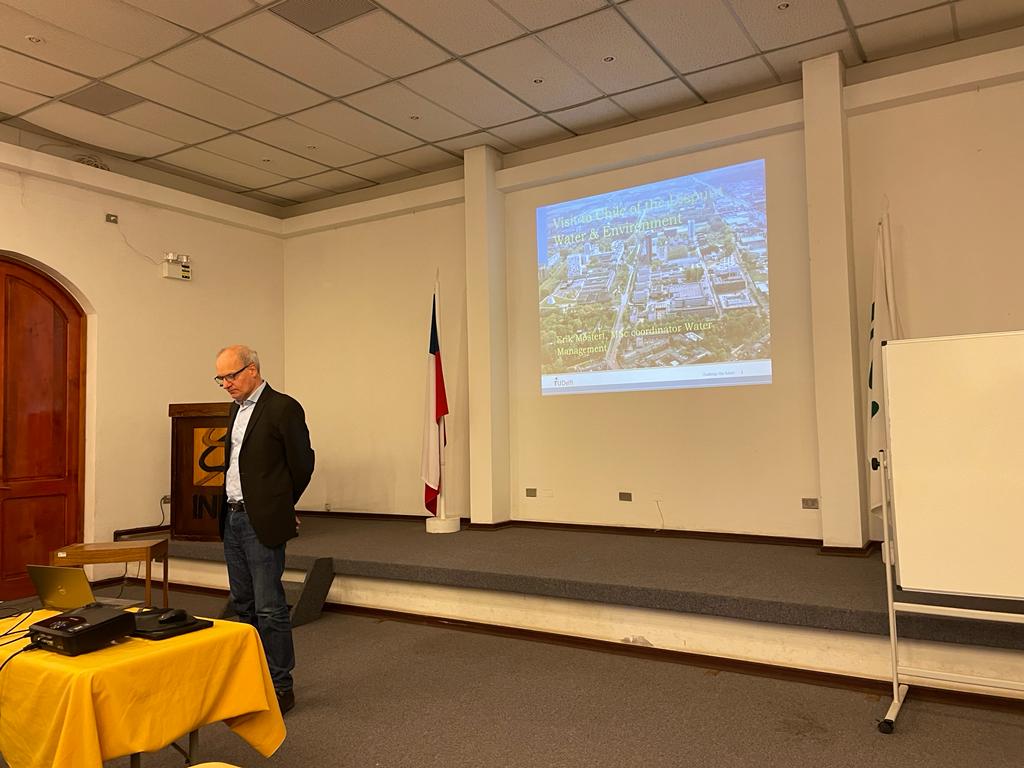
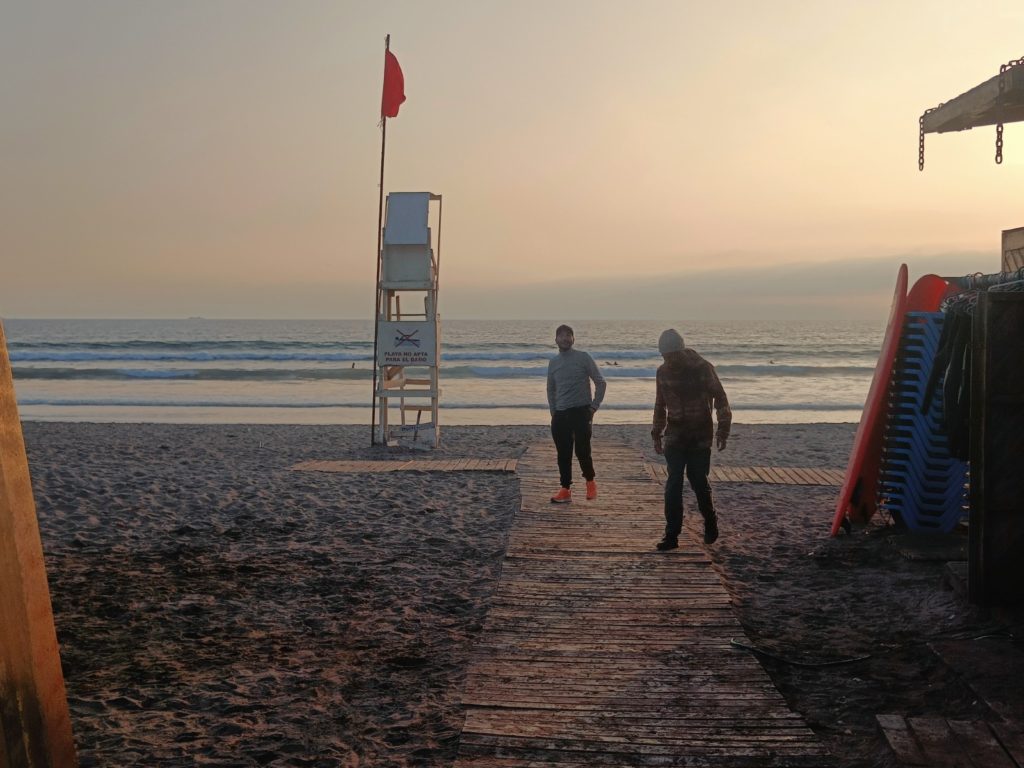
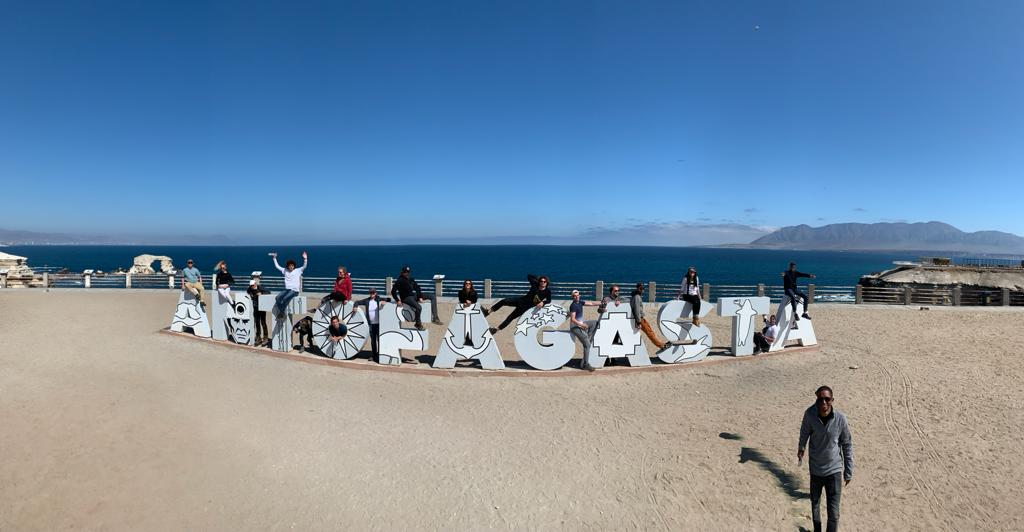
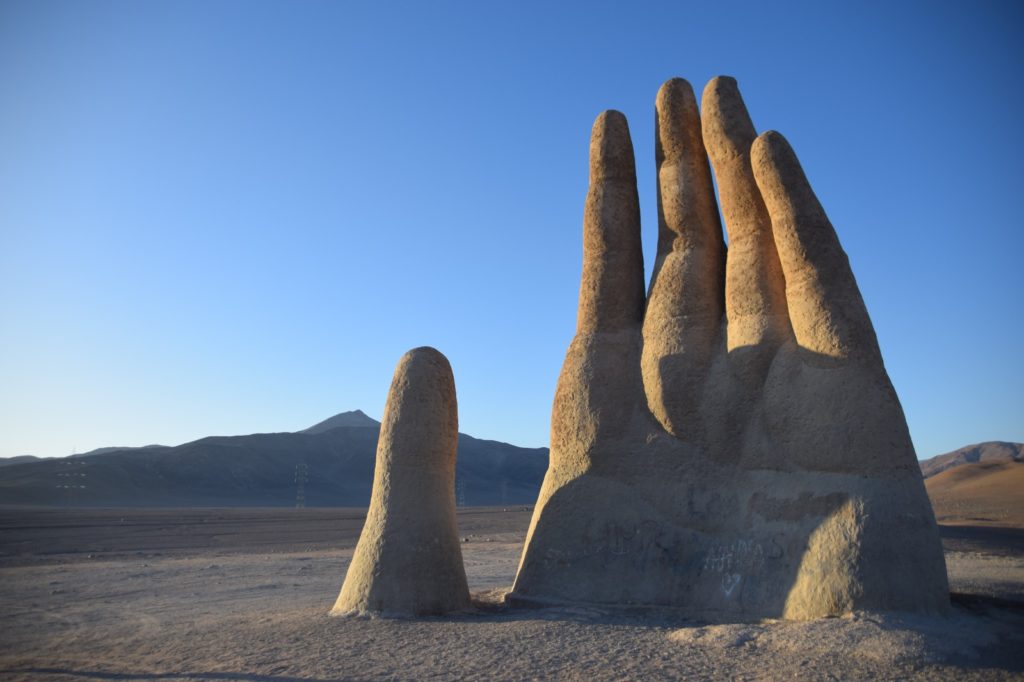
Noa: “A twelve hour overnight bus drive brought us to Antofagasta, a coastal city, where the adventure started around 6.30 at an enormous statue of a hand; symbol of the emptiness of the Atacama Desert, where Antofagasta is located. After the sun had risen, we went into the bus again, where a few karaoke songs were sung and clothes were quickly changed next to a graveyard for dogs (it was much warmer compared to La Serena), to prepare for a beautiful hike in the desert. Then we had lunch in Antofagasta, saw the harbour (with sea lions!) and visited a viewpoint, until we could check into our hotel (a true luxury after all the hostels we’ve slept in!). Not long after arriving, we joined a Zoom meeting with students from the Antofagasta university. Sadly, we couldn’t meet in person, but we still managed to hear their presentations and we could also show them a bit of our work. The night and the next day were free, but almost the whole group went to another part of the desert by bus, where we did an even more beautiful hike (it was longer too). Luckily we brought lunch, after which a few brave people decided to swim despite the suddenly chilly weather. Afterwards, part of the group went to the hotel, while the other part visited the Atacama Desert Museum. The night was free again, so we enjoyed our lovely beds once more before moving on to San Pedro; the final destination!”
Our last stop was San Pedro de Atacama, a small but very touristic place along a small river in the middle of the desert. Duringly, we visited some great sights such as an active volcanic area with geysers at 4600m above mean sea level. Furthermore, we went stargazing in the desert which resulted in some fascinating views. Finally, what became a warm and close group, separated again to go their own way, whether that be home or an extension of their holidays elsewhere in South-America.
Anja:
“The last stop during our trip to Chile was San Pedro de Atacama, a small Chilean town located in the Antofagasta region. San Pedro lies at a high arid plateau, and is characterized by a desert climate, where there is almost no rainfall during the year. Additionally, this village is full of dusty roads, mud-brick houses, and has one outstanding white church near the main square. During our stay here, we could experience very little electricity and wifi, which is not common nowadays.
Nevertheless, we had a whale of a time here: the night when we arrived, we seized the opportunity to see the Milky Way, and we went on a stargazing tour! The Atacama desert is famous for being one of the best locations in the world where one could see the stars clearly. The high altitude and the low density population results in almost no light pollution. This creates perfect conditions to observe the galaxies.
Just a few hours after the stargazing tour, we headed to the geysers. They are located north from San Pedro de Atacama, at an altitude of above 4000m. At this height, some of us experienced altitude sickness, but no one gave up from the tour. The geysers are constantly spraying clouds of steam in the air, and thus creating spectacular visual displays. The unique terrain where they are located felt like we were on a different planet. We were there during sunrise, to be able to observe the water rising up, and capture excellent pictures. On the way back we could see Llamas.
After a night and a morning full of activities, we still decided to continue our adventure in San Pedro, and we went cycling in the driest desert in the world! We were surrounded by canyons and mountains: it was an absolute bliss.
Our last day we spent walking through San Pedro, observing vendors selling handmade souvenirs and spending hours happily wandering around the dusty streets, stopping into gift stores and bars.
As a round-up, we had a dinner with the whole group, where we summarized our past two weeks. After San Pedro, our IBET trip ended: some of use continued towards Bolivia, and some went back to Europe, but everyone brought unforgettable memories with them.”
